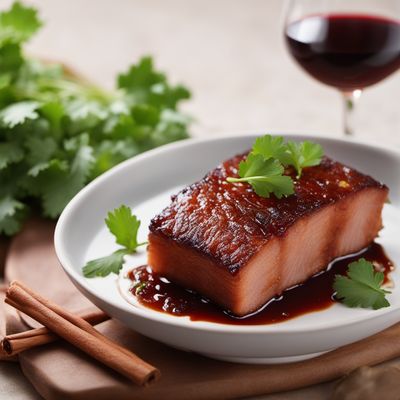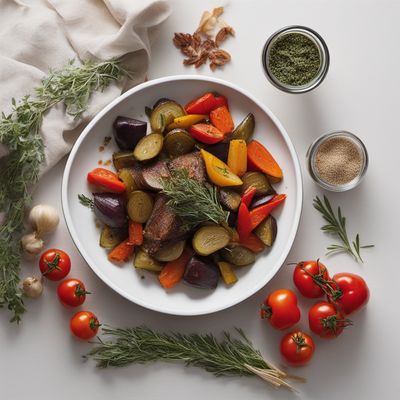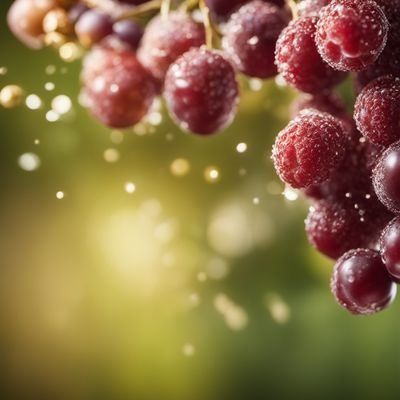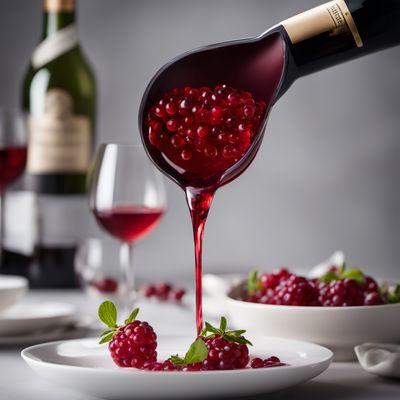
Ingredient
Wine
The Elixir of the Gods
Wine is a fermented beverage made from grapes, with a wide range of varieties and styles. It can be red, white, or rosé, and its characteristics vary depending on factors such as grape variety, region, and winemaking techniques. Wine can have flavors ranging from fruity and floral to earthy and spicy, with a diverse range of aromas and textures.
Origins and history
The origins of winemaking can be traced back to ancient civilizations such as the Egyptians, Greeks, and Romans. Wine has played a significant role in various cultures throughout history, from religious ceremonies to social gatherings. It has been produced in regions all over the world, with notable wine-producing countries including France, Italy, Spain, and the United States.
Nutritional information
Wine contains varying amounts of alcohol, typically ranging from 12% to 15%, and provides calories from alcohol. It also contains antioxidants, such as resveratrol, which may have health benefits when consumed in moderation.
Allergens
Wine may contain sulfites, which can cause allergic reactions in some individuals. Additionally, some people may be sensitive to histamines or other compounds present in wine.
How to select
When selecting wine, consider the occasion and the desired flavor profile. For red wines, look for deep color and clarity, while white wines should be clear and bright. Check for any off-putting aromas or flavors, and consider the grape variety and region to match your preferences.
Storage recommendations
To maintain the freshness and quality of wine, store it in a cool, dark place, away from direct sunlight and temperature fluctuations. Opened bottles should be resealed tightly and stored in the refrigerator to slow down oxidation.
How to produce
Amateur winemakers can produce their own wine by sourcing quality grapes or grape juice, fermenting them with yeast, and following proper winemaking techniques. This can be done at home or in small-scale winemaking facilities.
Preparation tips
Wine can be enjoyed on its own or paired with a wide range of dishes. Red wines are often paired with red meat, while white wines complement seafood, poultry, and lighter dishes. Rosé wines are versatile and can be enjoyed with a variety of cuisines.
Culinary uses
Wine is commonly used in cooking to enhance flavors in sauces, marinades, and desserts. It can be used to deglaze pans, add depth to stews, or create rich reductions. Wine is also a key ingredient in classic dishes such as coq au vin and boeuf bourguignon.
Availability
Wine is available in most regions around the world, with notable wine-producing countries including France, Italy, Spain, the United States, Australia, and Argentina.
More ingredients from this category
Recipes using Wine

Fujian-style Braised Pork Knuckle
Fujian Delight: Tender Braised Pork Knuckle in Fragrant Sauce

Hangzhou-Style Soy Sauce Pickled Duck
Savory Delight: Hangzhou's Tangy Soy Sauce Pickled Duck

General Tso's Chicken
Crispy General Tso's Chicken with a Sweet and Spicy Sauce

Red-Cooked Pork Belly
Savory Braised Pork Belly: A Chinese Delight

Risotto Amarone
Velvety Amarone Risotto: A Taste of Italian Elegance

São Toméan-style Pork Roast with Wine
Exquisite São Toméan Pork Roast: A Fusion of Flavors

Taiwanese-style Mushroom Risotto
Taiwanese Mushroom Medley Risotto: A Fusion of Italian and Taiwanese Flavors

Faraona al Barolo with Roasted Vegetables
Savory Delight: Tender Faraona al Barolo with Herb-Roasted Vegetables



